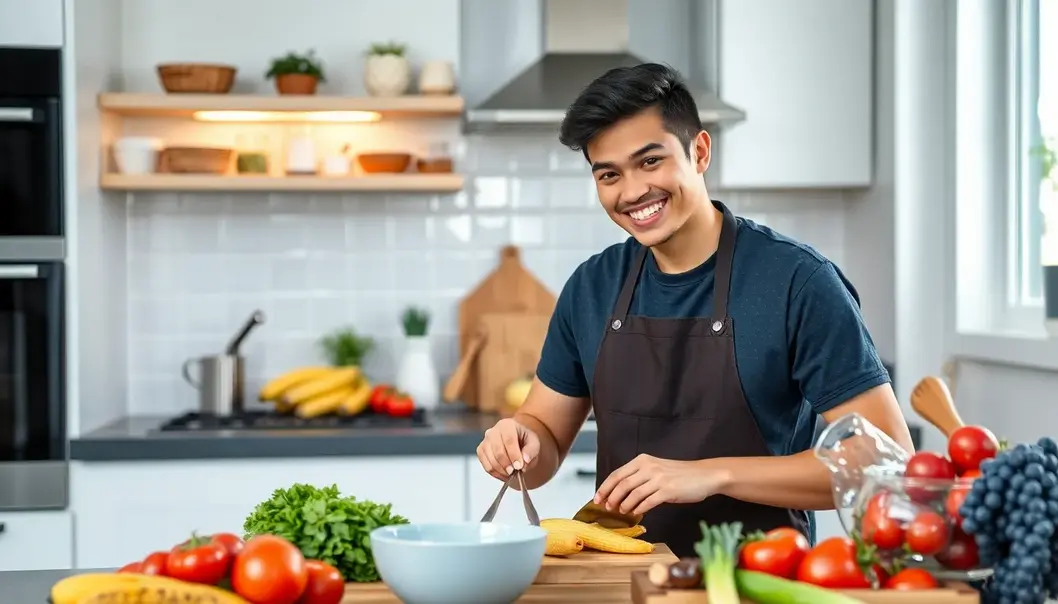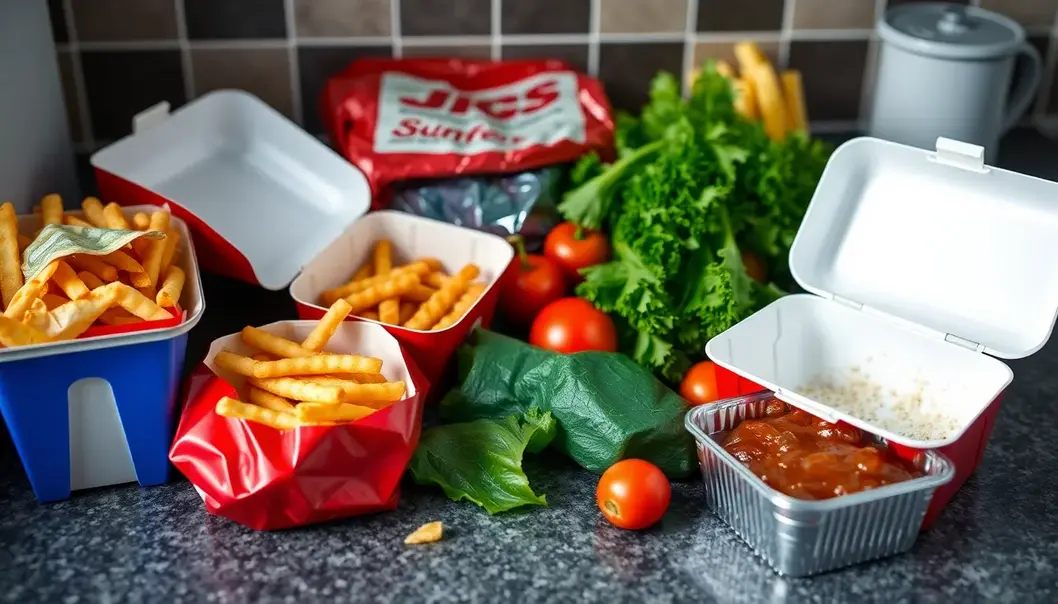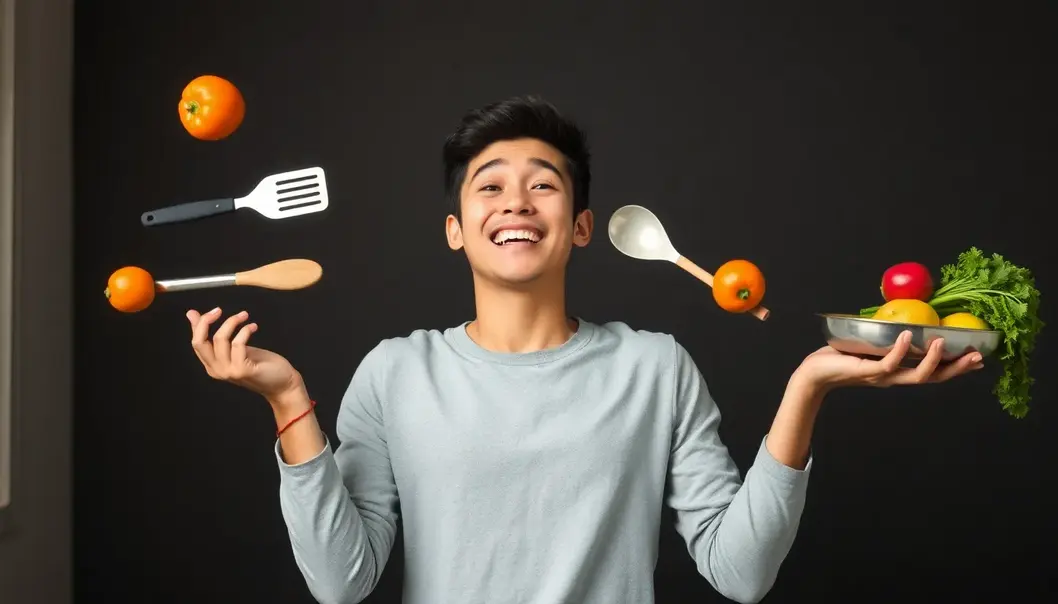Cooking for oneself can seem like an inspiring culinary adventure at first. The promise of tailor-made meals and unrestrained menu choices is undeniably attractive. However, the reality often involves a steep learning curve. Between those expertly curated Instagram feeds and the bustling real-world kitchen stands a gap peppered with unexpected challenges. Whether it’s about portion control or learning how not to waste that remaining half onion, solo cooking often blends unexpected realities with moments of creative breakthrough. Join us as we unravel the experience of cooking for one—from naive expectations to the surprising truths waiting to be discovered on any young adult’s kitchen counter.
The Ideals of Solo Cooking: A Flavorful Canvas

Embarking on the culinary journey of solo cooking often begins with a tantalizing ideal—a blank canvas filled with endless possibilities of flavors and creativity. As young adults transition into their independent lives, the allure of crafting each meal to cater to personal preferences becomes a delightful prospect. Freedom from the constraints of family tastes or roommate preferences allows one to experiment with more adventurous recipes and flavors. The initial expectation is that solo cooking becomes an expression of individuality, mirroring one’s unique personality across the palette of gastronomy.
The notion of replicating vibrant bowls seen on social media feeds or trying out that intricate recipe discovered in a food blog fuels the imagination. Young adults anticipate the liberty to savor the exotic spices they’ve always wanted to try or recreate the nostalgic dishes from childhood with a modern twist. The kitchen transforms into a creative playground where constraints are minimal, and imagination is limitless.
Inspired by the idea of mindful eating, many set out on this journey believing they will focus on fresh, seasonal ingredients and explore diverse cuisines. The expectation is not just about sustenance, but a pursuit of culinary artistry that tantalizes both the taste and the senses. The process of planning a weekly menu tailored entirely to personal likes and dislikes seems empowering. Part of the allure lies in the ability to Craft meals that range from gourmet to comfort food as the mood dictates.
Alone in the kitchen, there’s an initial belief in a symphony of serene cooking sessions: well-organized groceries, meticulously laid-out cookware, and an uninterrupted time flow to perfect each dish. The potential for zen-like creativity as one dices, sautés, and simmers is seen as a form of self-care and a ritual to look forward to each day. However, these initial ideals sometimes clash with the practicality and reality of solo cooking, a topic we’ll navigate deeper in the following chapters.
(Exploring creativity in cooking is much like embracing differences in adopting pets), where the personal touch makes all the difference. As we unfold these expectations, it sets the scene for delving into the practical aspects and challenges that reality often presents. This creative anticipation lays the groundwork for understanding how the ideals of solo cooking can sometimes blend with the realities, or clash profoundly against them.
Facing the Realities: More Fast Food, Less Gourmet

The concept of solo cooking often begins with visions of culinary creativity—a canvas for endless exploration and self-expression. However, the reality often falls somewhere between a gourmet experience and a fast-food reality check. While the initial expectation may involve fragrant spices simmering on the stove, a glass of wine in hand, and a meal carefully crafted to one’s own taste, the day-to-day experience of cooking for oneself often looks much different.
When cooking for one, the prospect of whipping up elaborate meals can quickly become less enticing. The sheer effort required to shop for and prepare ingredients often overshadows the initial allure. The major grocery stores do not cater conveniently to single servings; portion sizes tend toward family meals, leading to inevitable food waste or the repetitive monotony of eating the same dish over days. In contrast, fast food offers convenience and variety, all without the hassle of cleaning up. The ease of ordering a meal that’s cooked and packaged, ready to be eaten immediately, often outweighs the benefits of a labor-intensive, home-cooked meal.
Moreover, with solo dining comes the inevitable realization that cooking alone means dining alone. While initially, this might seem peaceful, an uninterrupted time to reflect or indulge in a favorite podcast, the absence of shared meals creates a palpable isolation. The silence of solitary dining can starkly contrast the bustling atmosphere of a community table. For this reason, many find themselves opting for quick and easy food solutions, perhaps sharing an online meal with friends or watching a favorite show, creating a semblance of companionship through virtual means. The social aspect of dining is indeed a component that seems more frequently nourished through fast food or takeout meals shared with others remotely.
The reality of solo cooking often necessitates adjusting expectations. Gourmet meals are swapped for meals that prioritize speed over sophistication, and practicality over indulgence. Exploring new dishes becomes a rarity rather than a routine as convenience-driven solutions emerge out of necessity. To further complicate matters, many kitchen gadgets and tools are designed for volume, not for the solitary cook. Often, simpler tools suffice, but this can limit the range of meals one might otherwise prepare.
These adjustments become a part of the culinary journey, redefining what it means to enjoy a meal alone. Learning to appreciate the simplicity of a quick meal after a long day, or the rare joy of crafting something truly special for oneself, becomes a key element in the experience of solo dining. If one chooses to embrace the realities fully, cooking can still maintain a sense of fulfillment by accepting these everyday choices. For those navigating the solitary culinary lifestyle, looking to balance the familiarity and convenience with occasional creative indulgence can enhance the overall solo living experience—much like choosing the right second dog to complement an existing pet, as one might find illuminating insights in this comprehensive guide.
Final words
Cooking for one can transform initial aspirations into a unique journey blending creativity and practicality. While challenges like portion control and leftover management redefine expectations, solo culinary exploits provide rewarding skills and unexpected delights. Whether refining recipes or adapting to the comforts of quick meals, embracing the nuances of cooking alone can reveal surprising culinary satisfactions and a deeper connection to our food choices.
Ready to elevate your solo culinary skills with pro tips? Discover more by subscribing to our newsletter for exclusive content!
Learn more: https://www.cooksolo.com/newsletter
About us
Cook Solo offers tailored advice, easy recipes, and expert tips for young adults embracing the solo cooking lifestyle. Our resources simplify meal prep and inspire culinary creativity, making solo dining both practical and delightful.



